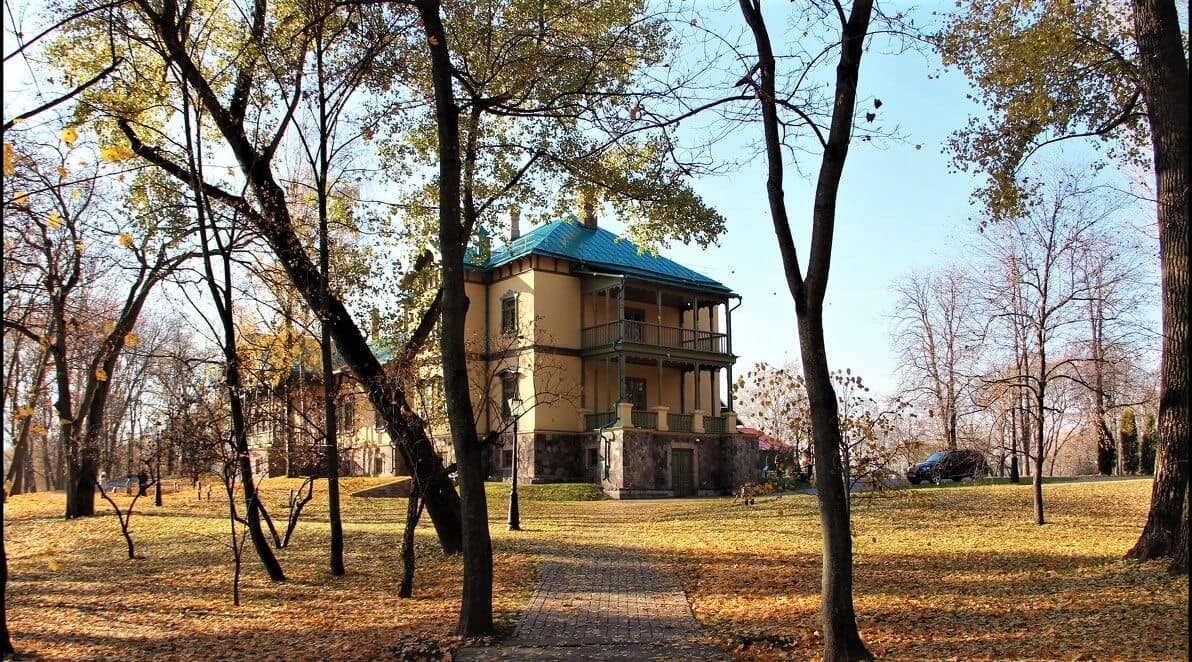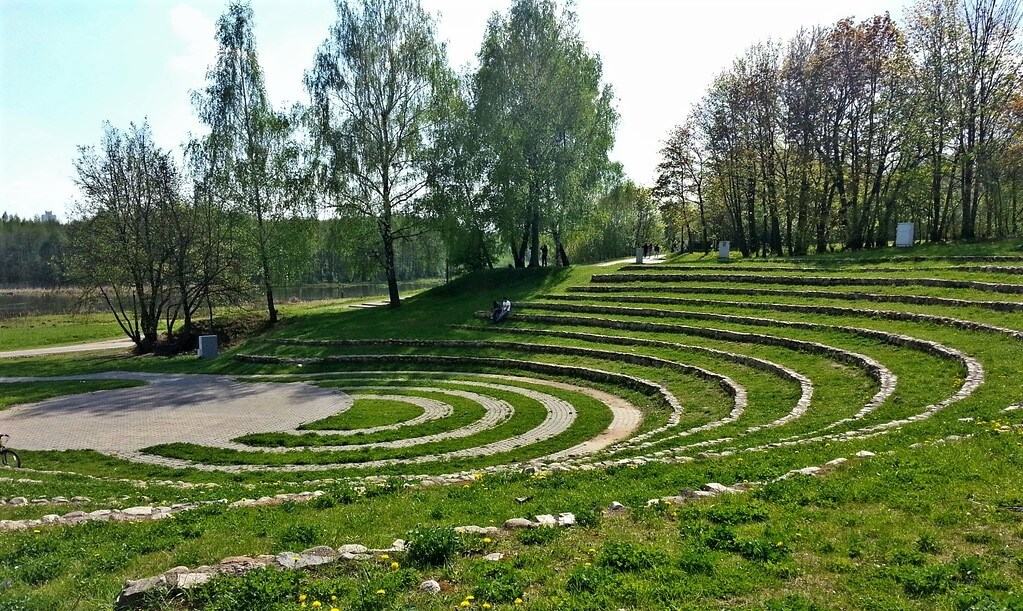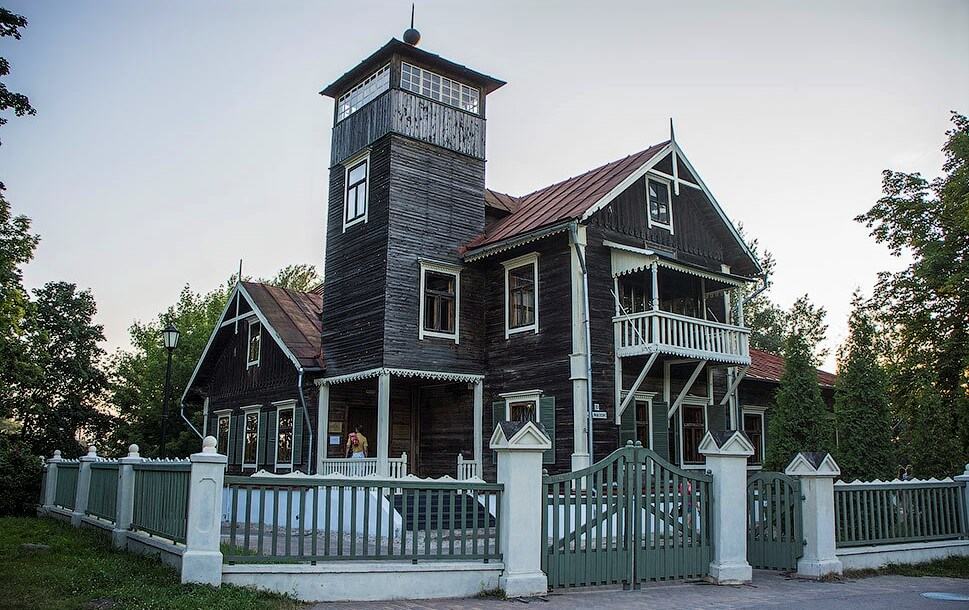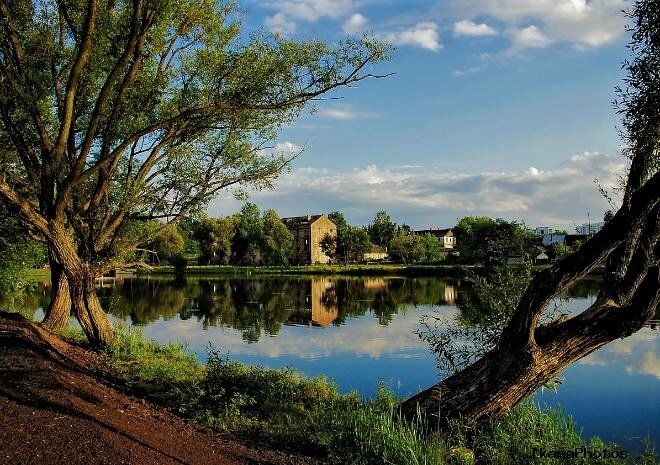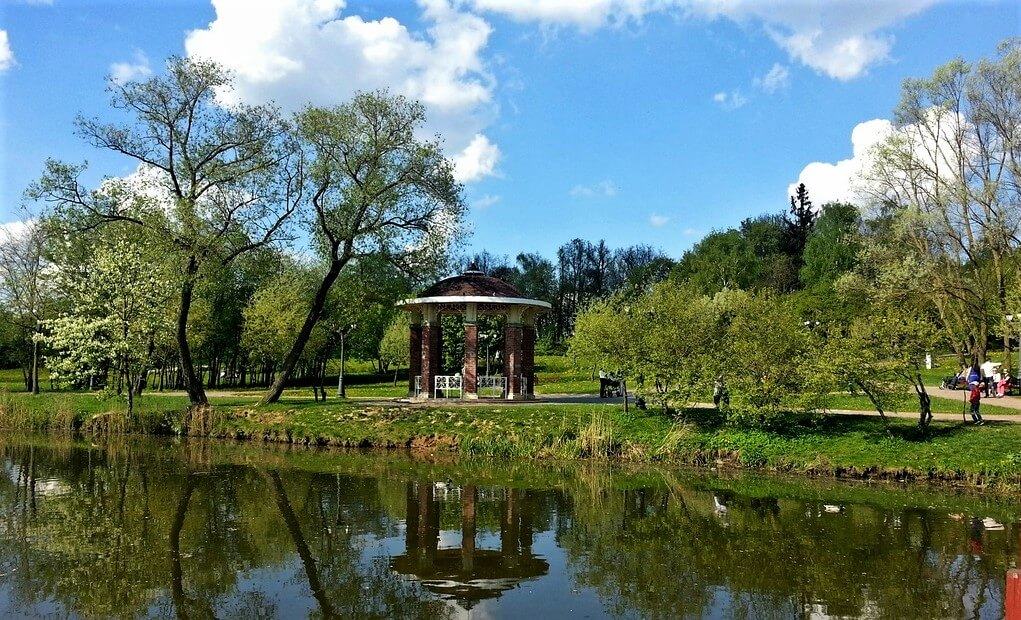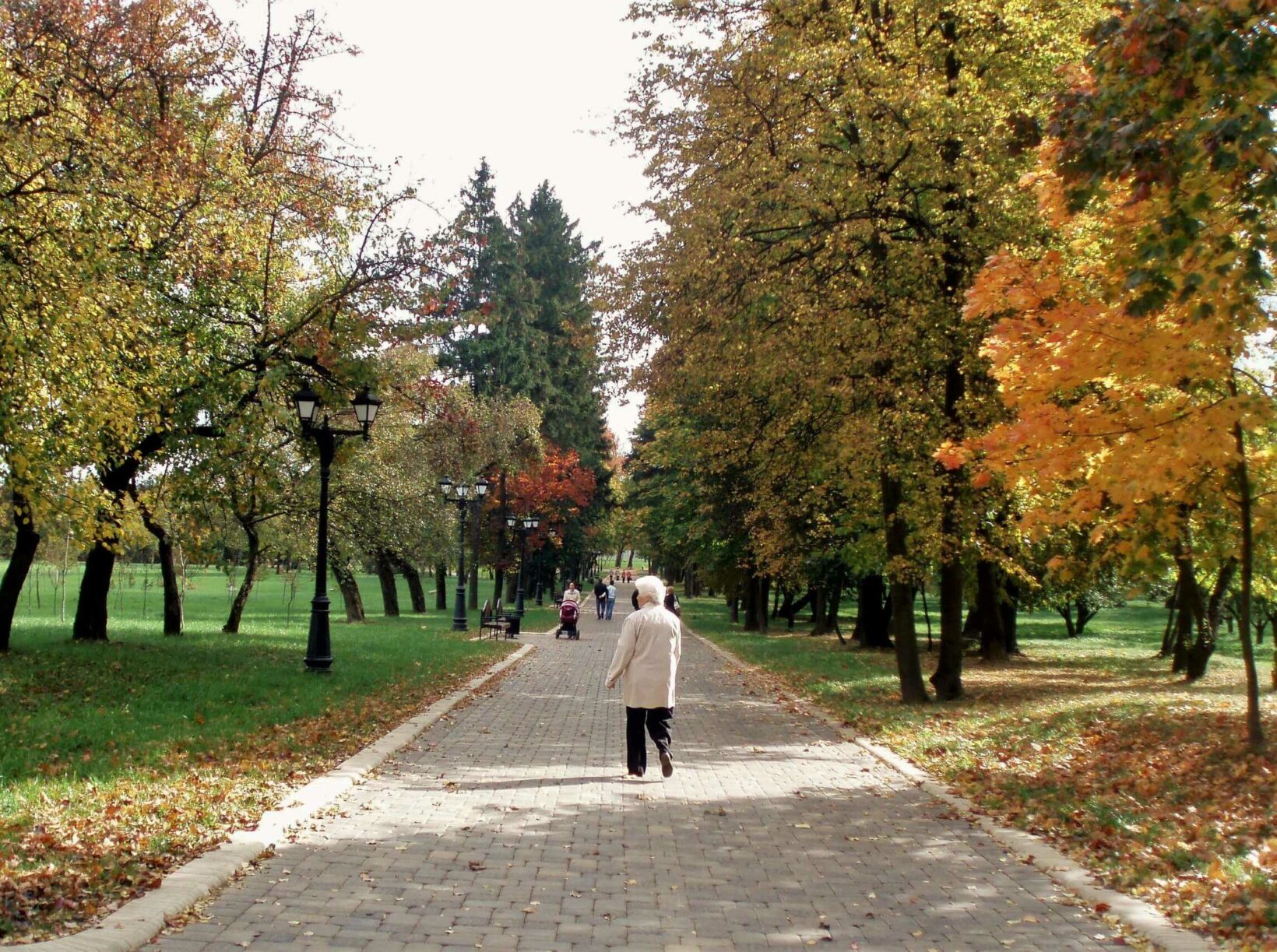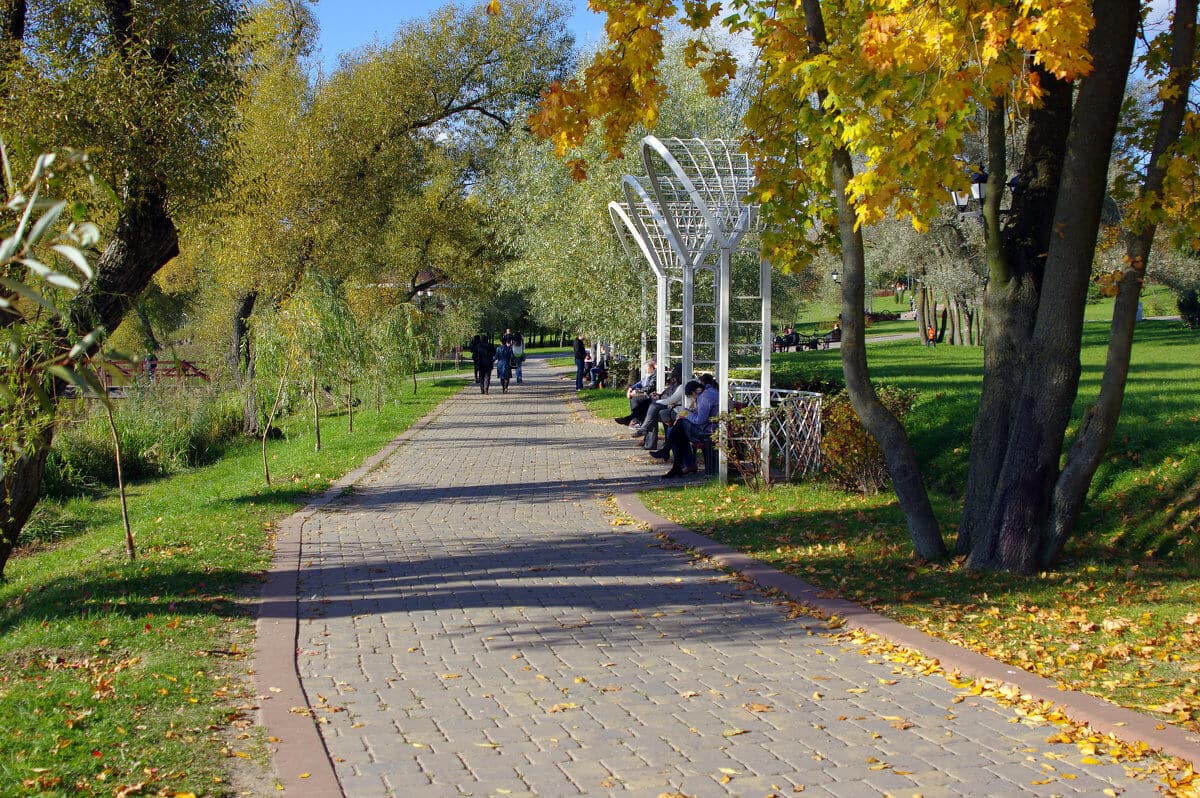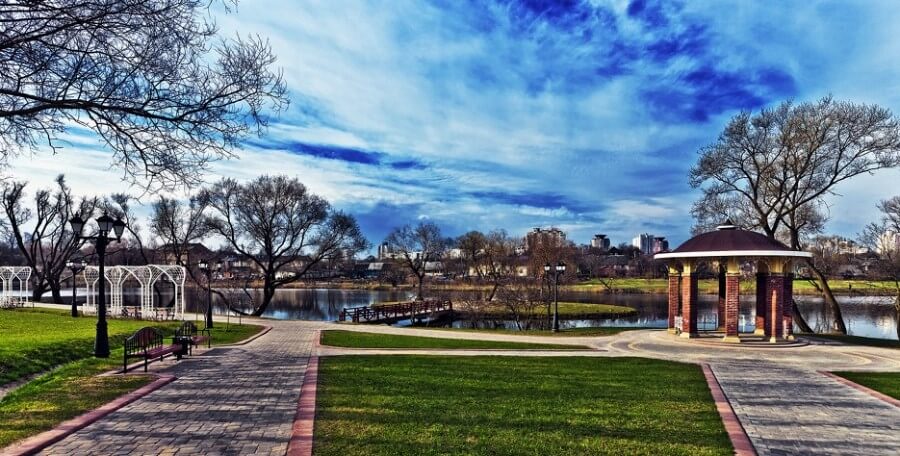
You, dear travelers, have probably already seen the sights of our capital, visited the Upper City, strolled across the Trinity suburb and the Botanical Garden, visited various museums and tried Belarusian dishes.
But, there is one more place that certainly deserves your attention. Far from the tourists’ “beaten path” there is a unique ancient park, the most mysterious, surrounded by legends and myths. It is called the Loshitsa manor and park complex. Let’s walk along its wonderful alleys.
History of Loshitsa park
The first mention of Loshitsa park refers to 1557. Then this land belonged to Vasily Tolochinsky, a representative of the clan of the Drutsky princes. After that, the land owners were the Drutsky-Gorski princes, the Radziwills, and Earl Prushinsky.
The park and the central lime alley were laid in the second half of the 18th century by the Earl Stanislav Prushinsky. The earl thoroughly took up the matter, rebuilt the old manor and made it so beautiful that even invited the King of Poland Stanislaus Augustus and the Russian Tsar Peter I to visit him.
A century later, his nephew Evgeny Lyubansky reconstructed the house in the style of “Russian modern”, built a two-storeyed wing for guests, a lodge, a distillery on the shore of the pond, a tavern, a three-storey stone mill, and restored the chapel.
In 1877, ownership of the women’s line passed to Jan Lubansky, and then his son Evstafy became the owner of the estate, which turned it into one of the most successful estates in the Minsk province. Evstafy was the last owner of the estate. He brought seedlings from different countries and planted them in the park. Thanks to him, you can see magnolia, Siberian fir, Manchurian nut, Crimean and mountain pine.
The Manor of Lubanskys was considered the center of the cultural life of Minsk. Poetry evenings, holidays, theatricals and other events were held here. Famous writer Vincent Dunin-Martsinkevich, composer Stanislav Moniuszko and other famous people of that time loved to visit the manor.
But in 1905, a tragic event occurred, a young beautiful wife, Eustache, died (we will talk about this a little later). According to a legend, not far from the place of her death, the Earl planted Manchurian apricot, which, blooming in the spring, resembles a rosebush.
Plan your trip to Minsk right now
The grief-stricken earl, for whom everything in the estate reminded of his beloved wife, soon left Loshitsa and went to the Caucasus, where a few years later he died.
After the revolution, the park was in desolation. On the initiative of Nikolai Vavilov in the 20s of the XX century, the Belarusian branch of the Institute of Plant Industry was established on the territory of Loshitsa Park.
The scientist-breeder brought to the park almost all kinds of grains growing in Belarus. In addition, Vavilov laid a huge garden, planted a lot of exotic plants. Later the institute moved and Loshitsa park remained ownerless.
Since 1987, the Loshitsa estate began to function as a department of the National Art Museum of the Republic of Belarus, but there was no money for restoration. And, only seven years ago, when “Minskzelenstroy” (municipal organization taking care of green and parks) became the owner of the park, large-scale restoration work began. In 2011, the renovated park hospitably opened its gates to the citizens and guests of the capital.
Talented Belarusian architects and restorers worked on the reconstruction of the Loshitsa park. There are conflicting opinions about the methods of the park and estate complex reconstruction, but, in our humble opinion, the renovated park is a rather rare example of a successful restoration. Travelers can visit the park and decide on their own. So, let’s start our walk.
Manor house and outbuilding
Evstafy Lubansky inherited a wooden house without many frills. And, the young nobleman decided to rebuild it. A specially invited architect, whose name is still unknown, found a non-standard solution: attach a two-story building to the end of a single-storey wooden building, and to make a veranda terrace on a high basement from the back side.
The building was asymmetric, but with a fairly organic form. Since then, it has been called the “White House”. One-storey building on the bank of the Loshitsa River has turned into an elegant residence. For a long time, the house gradually fell into disrepair, until it was restored a few years ago. Now, a museum occupies the house, the interiors of centuries ago were restored, the tiled stoves of unusual beauty and refinement of those times – the first bath in Minsk.
The wooden outbuilding is the only building that has survived to this day almost entirely and practically in its former form. Historians have found out that once there was a manor house in its place. But, only foundations and cellars were left from it. Later, it was rebuilt and adapted for household needs. The outbuilding served to provide various needs of the owners of the estate. One of the main premises here was the kitchen. It was not placed in a residential building to protect the owners of the estate from unpleasant smells.
Chapel, windmill, and brewery
There was also a Roman Catholic chapel on the territory of the manor. Only one half-ruined wall left from it to our days. For a long time, the chapel was the burial place of the estate owners. After the revolution, in connection with the organization of a tractor station here, all the coffins containing lead were taken from it.
The family crypt was twice almost destroyed. In the 1920s, the building was partially blown up. Just partially, because the initial mass of the charge was not enough to immediately destroy the thick walls of the building. The building overlived this explosion, but it lost its dome. The chapel was adapted for the warehouse of the farmer’s inventory.
During the occupation period, the Nazis kept ammunition there. When they retreated, they did not have time to take it out and blew it up with the whole chapel. During some time, it was a unique religious building, rare for Belarus – octagonal, with a hipped roof. It was built it in the style of a late, so-called ‘Vilnius baroque’. Today, the ruins are conserved.
Three ancient buildings in the Loshitsa park on the other side of the river belong to the monuments of industrial architecture of the XIX century. The buildings are industrial, but the facades are like of museums.
This is a complex of Brovar. Its final appearance was formed in 1896 when an alcohol cleaning workshop was attached to the manor distillery. It is noteworthy that both the Brewery complex and the mill were used as housing until the 1970s.
The mill was built in the 18th century, then it was rebuilt and donated to the local peasant Agafia. Gradually the mill has been destroyed, and now only ruins remain from it. A few years ago, before the restoration of the park, the mill was used by climbers for training.
Legends of Loshitsa Park
And now, we will proceed to the most exciting part of our telling. We will tell you about the legends of the ancient Loshitsa park. It has accumulated a lot of them during the centuries of its history.
At the age of 37 the last owner of the manor, Eustace Lyubansky, passionately fell in love with a young girl called Yadviga Kenevich and married her. He also improved the estate for the young wife. As we have already told you, receptions were often organized in the estate.
The house was always full of guests. Charming hostess attracted the attention of many men. Among her admirers was one of the most influential aristocrats of the Minsk province – Earl Karol Emerik Czapski. Yadviga Lubanskaya was also not indifferent to him.
In June 1905, the landlady of the estate celebrated her 35th anniversary. Evstafy made his beloved wife a royal gift – he organized a magnificent ball in her honor. Among those invited was the Earl Emerik Czapski, who recently returned from a business trip abroad. During the ball, lovers met after a long separation. It was the moment that Lubansky saw his wife in the embrace of the earl. The family drama has started…
And, in the morning the birthday girl disappeared somewhere. When little dogs, always accompanied by the hostess, brought her hat, then Eustathius realizing that something went wrong, hurried to find his wife.
The premonition of trouble was not in vain. Yadviga drowned in the most beautiful place of the park: where the Losha river meets Svisloch. Eustathius suffered greatly from what had happened. Often he could be seen at the site of the tragic death of his wife.
Near the place of the Jadwiga’s death grows the Manchurian apricot (it is the only one in the old parks of Belarus). It is said that just at the time of its flowering, and in the summer before the Kupalle holiday on moonlit nights, a ghost appears in the park.
On spring nights, the specter of Yadviga emerges to the lovers – a distinct silhouette of a lady in white robes. She predicts the fate to the most courageous and helps with practical advice. Yevgeny Terekhov, former deputy director of the Loshitsa Palace and Park Complex, claimed that he had seen the White Lady with his own eyes.
There are many versions of the estate hostess death. The historian Nikolai Bogodyazh described the version of the romantic relations between Yadviga and Karol Emerik Czapski. However, it is relieved of historical certainty, since the earl died in 1904. Yadviga’s brother Antony claimed that his sister was sick and often fainted.
When she was found, she laid in the water near the shore with a face turned to the bottom. But, he also argues, citing the testimony of Iainina and Maria Czapski, that a romance of Yadviga with the Minsk governor Alexander Musin-Pushkin could lead to suicide, and he had to return from Minsk to St. Petersburg.
Some associate the name of Yadviga with Pavel Kurlov, the Minsk governor who took office in the autumn of 1905. Perhaps Evstafy Lubansky for personal reasons helped the SRs in 1906 to prepare an attempt on Kurlov. There are many versions of the legend.
There is another legend at the Lositsky Park. One of the Drutsk-Gorsky princes had three daughters. He decided to plant a tree for each one symbolizing the strength of the family, love, luck. Two oaks did not survive to our time, but one did.
It began to be called the “Engagement oak”. In the 20th century, unmarried girls often came to him, bowed and asked for a happy family life. It is said that the oak fulfilled their wishes. In 2010, the giant died of a lightning stroke, but people still believe in its magical power. They continue to ask for health, inspiration, successful marriage.
Also, a quiet creek by the mill was surrounded by the unfortunate glory at the end of the XIX century. It was said that bathing here is a sure death for young handsome guys. Local mermaids were choosing grooms here. At the same time, the girls could swim here without any fear – the mermaids didn’t touch them.
Modern infrastructure of the park
The park has all the conditions for a comfortable stay of citizens. After the reconstruction, there are paved paths, flower beds, benches, lights, information signs here. At the entrance to the park, there is a map of the park with all the sights and alleys. There are cozy gazebos built in the picturesque corners of the park, stairs, bridges and an amazing landscape amphitheater not far from the mill, you can see it in the photo.
There are penthouse sheds in a special zone on the bank of the river, near a picturesque island connected to the embankment by an elegant bridge. Vacationers in the park not only walk, but also sunbathe, bathe, fish, feed ducks. You can rent a bicycle and ride on specially built bike paths. By the way, Evfstafy Lubansky was a member of the cyclists’ association. This tradition will be restored here, even using the transport from those times – bikes with no less than three wheels. There is a children’s playground called “Gorad Majstrou” built for children. In the manor house, you can visit a museum.
The park hosts Lositsky festivals and knight tournaments. In this blooming lush oasis, you can spend a whole day, forgetting about time and city bustle, enjoying the singing of the birds, the smell of plants and water. There are no noisy rides and loud music, leisurely walks along its beautiful shady avenues will give your soul peace and tranquility. The park is beautiful in any season of the year, whether it is snowy winter, colorful autumn, blooming spring or lush summer.
An ancient magnificent Loshitsa estate, surrounded by secrets and legends, today has become a popular holiday destination. But, the most important thing is that life returned to the abandoned Loshitsky Park.
Through the efforts of architects, restorers, builders and landscapers, it has been given longevity and a new historical turn, in which ancient buildings and centuries-old traditions will perfectly live together with the modernity. Enjoy your vacations.
Learn about the unusual things to do in Minsk
Nice 4k video about the Loshitsa Park
Photos and materials are borrowed from sites:
http://poshyk.info/istoriya-loshickogo-parka/
http://posmotrim.by/article/loshickiy-park-v-minske.html
http://trip-by.blogspot.com.by/2012/01/blog-post_11.html
